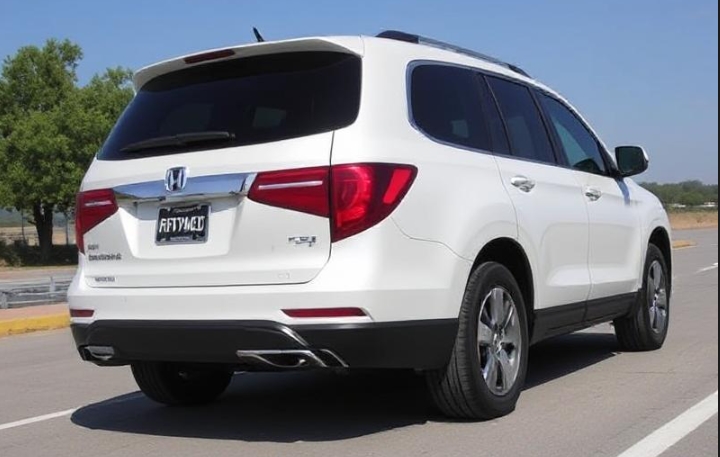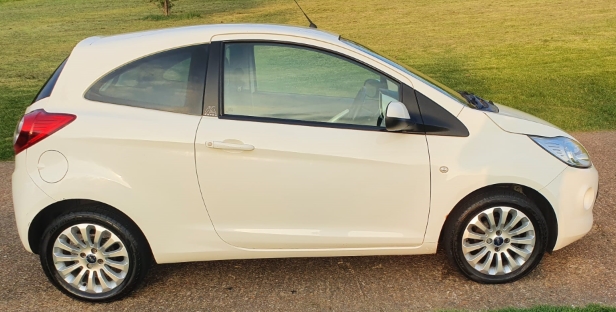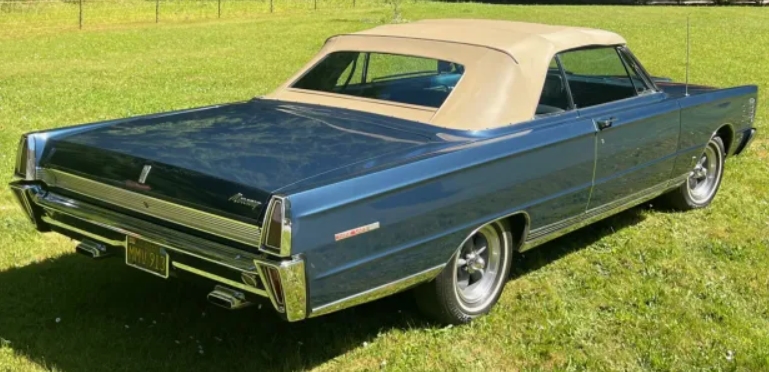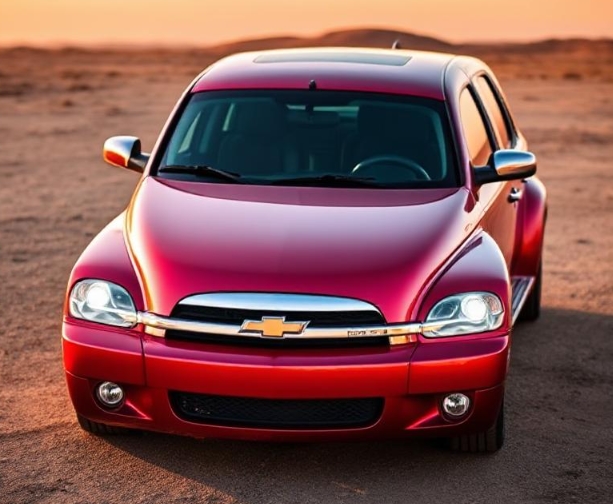Unpacking the Evolution of the Daewoo G2X
In the annals of automotive history, some vehicles carve out a significant legacy through decades of production and myriad iterations. Others, however, blaze brightly for a fleeting moment, leaving behind a distinctive, albeit brief, mark. The Daewoo G2X belongs to the latter category. A compact, two-seater roadster, the G2X represented a bold, albeit short-lived, attempt by Daewoo to inject excitement and performance into its South Korean lineup. Its “evolution,” however, is not a story of a model that matured through multiple generations, but rather a tale of rebadging, strategic market positioning, and a brief, impactful existence as part of a larger, global General Motors platform.
To understand the Daewoo G2X, one must first understand its true origins: the General Motors Kappa platform. This innovative architecture served as the foundation for a series of small, rear-wheel-drive (RWD) sports cars that GM launched in the mid-2000s, aiming to rekindle enthusiast interest and showcase its engineering prowess. Designed to be modular and cost-effective, the Kappa platform allowed various GM brands to create distinct roadsters and coupes sharing fundamental components. The G2X, therefore, was not conceived from scratch by Daewoo, but rather adopted as part of a broader GM product strategy.
The journey of the Kappa platform began with the sensational Pontiac Solstice. First unveiled as a concept at the 2004 North American International Auto Show, the Solstice immediately captured imaginations with its sleek, retro-inspired styling, classic roadster proportions, and promise of an affordable, engaging RWD driving experience. It entered production for the 2006 model year, becoming the quintessential expression of the Kappa platform’s potential. Initially powered by a naturally aspirated 2.4-liter Ecotec LE5 inline-four engine producing 177 horsepower, the Solstice quickly garnered a following for its sharp handling, direct steering, and undeniable style. Later, Pontiac introduced the high-performance Solstice GXP, which featured a turbocharged 2.0-liter Ecotec LNF engine, dramatically boosting output to 260 horsepower and transforming the roadster into a genuine performance machine.
Hot on the heels of the Solstice, GM introduced its sibling, the Saturn Sky, for the 2007 model year. While sharing the same Kappa platform, the Sky presented a more aggressive, decidedly European-influenced design penned by Franz von Holzhausen. Its sharper creases, more angular lines, and unique grille gave it a distinct personality compared to the softer, more flowing lines of the Solstice. Like the Solstice, the Saturn Sky was initially offered with the 2.4-liter Ecotec LE5 engine. However, the true star of the Sky lineup was the Red Line variant. Identical in its powertrain to the Solstice GXP, the Sky Red Line also boasted the potent 2.0-liter Ecotec LNF turbocharged direct-injection engine, delivering 260 horsepower and 260 lb-ft of torque. This engine, a marvel of small-displacement forced induction, allowed the Sky Red Line to sprint from 0 to 60 mph in under 5.5 seconds, solidifying its status as a serious contender in the affordable sports car segment. The Sky Red Line’s performance, combined with its striking aesthetics, made it the direct ancestor and closest relative to what would become the Daewoo G2X.
Concurrently with the Saturn Sky’s introduction, GM also leveraged the Kappa platform for its European market. The Opel GT, launched in 2007, was essentially a rebadged version of the Saturn Sky, specifically the high-performance Red Line variant. This meant that the Opel GT also featured the same 2.0-liter Ecotec LNF turbocharged engine, delivering 264 PS (260 hp) and 353 Nm (260 lb-ft) of torque, coupled with either a 5-speed manual or an optional 5-speed automatic transmission. The Opel GT retained the aggressive styling of the Saturn Sky, differentiated primarily by Opel’s distinctive grille and badging. It was this specific model – the Opel GT – that would serve as the most direct template for the Daewoo G2X.
The Daewoo G2X: Its Brief but Potent Era
Production Years: 2007-2009
The Daewoo G2X made its debut in 2007, specifically for the South Korean market. At this time, Daewoo, a subsidiary of General Motors, sought to enhance its brand image and offer a “halo car” that could inject excitement and performance into its otherwise practical and budget-oriented lineup. The G2X was precisely that car: a performance-oriented roadster that stood in stark contrast to the sedans and hatchbacks that typically bore the Daewoo badge.
The “evolution” of the G2X itself is not marked by successive redesigns or powertrain upgrades under the Daewoo nameplate, but by its singular, highly specified offering. The Daewoo G2X was, unequivocally, a rebadged Opel GT. This meant it inherited the same aggressive styling, sophisticated chassis, and powerful engine that made the Opel GT (and by extension, the Saturn Sky Red Line) a compelling sports car.
Engine and Performance: At the heart of every Daewoo G2X was the remarkable 2.0-liter Ecotec LNF turbocharged direct-injection four-cylinder engine. This engine, co-developed by GM and Opel, was a technological highlight, featuring:
- Displacement: 1,998 cc (121.9 cu in)
- Valve-train: DOHC, 16-valve
- Fuel System: Direct injection
- Power Output: 264 horsepower (197 kW) at 5,300 rpm
- Torque Output: 260 lb-ft (353 Nm) at 2,500-5,000 rpm
- Turbocharger: Twin-scroll Garrett turbocharger
- Intercooler: Air-to-air intercooler
This powerful engine meant the G2X could rocket from 0 to 100 km/h (0 to 62 mph) in approximately 5.5 seconds, and achieve a top speed of around 227 km/h (141 mph). These figures placed it firmly in the realm of genuine sports cars, offering performance levels far exceeding any other vehicle in Daewoo’s contemporary showroom.
Transmission Options: The G2X offered two transmission choices, catering to different driving preferences:
- 5-speed Manual Transmission (Aisin AR-5): This was the enthusiast’s choice, providing direct engagement and control over the formidable power output.
- 5-speed Automatic Transmission (GM 5L40-E): For those seeking convenience, this automatic allowed for spirited driving without the need for manual shifting.
Chassis and Handling: Being built on the Kappa platform, the G2X benefited from a robust and well-engineered chassis. It featured:
- Independent Double Wishbone Suspension: At both the front and rear, providing excellent road holding and a comfortable ride.
- Rack-and-Pinion Steering: Delivering precise and responsive feedback.
- Four-Wheel Disc Brakes with ABS: Ensuring strong stopping power.
- Limited-Slip Differential: Standard on the G2X, which significantly enhanced traction and handling during aggressive cornering.
Exterior and Interior Design: The Daewoo G2X’s exterior was largely identical to the Opel GT, meaning it shared the sharp, aggressive lines and sculpted panels of the Saturn Sky Red Line. Its design was characterized by:
- A long, muscular hood.
- Short front and rear overhangs.
- Flared wheel arches housing large alloy wheels.
- A low-slung, wide stance.
- A compact, two-seater convertible cabin with a manual soft top.
The only significant differences were the Daewoo badging – primarily the grille emblem, steering wheel logo, and rear trunk badge – which replaced the Opel insignia. The interior was driver-focused, featuring comfortable sport seats, a three-spoke steering wheel, and a relatively sparse but functional dashboard. Standard features were indicative of its premium positioning within the Daewoo range, including air conditioning, power windows, remote central locking, and a basic audio system.
Models and Trim Levels: A Singular Proposition
Crucially, the Daewoo G2X did not offer multiple distinct models or trim levels in the way its American siblings (Solstice and Sky) did, with their naturally aspirated and turbocharged variants. The Daewoo G2X was effectively offered as a single, high-performance variant.
When a customer bought a Daewoo G2X, they were purchasing the full-spec, turbocharged roadster. The only significant choices for buyers were:
- Transmission: 5-speed manual or 5-speed automatic.
- Exterior Color: A limited palette of vibrant colors.
- Interior Finish: Typically a choice of a single or two-tone leatherette upholstery.
There was no “base model” G2X with a smaller engine, nor were there “LS,” “LT,” or “GXP/Red Line” designations within the G2X’s own lineup. The G2X was the equivalent of the most powerful, top-tier version of its Kappa platform relatives. This streamlined approach simplified the buying process but also underscored its niche market position as a dedicated sports car rather than a broad-appeal offering.
.
THIS might be a great place to get your new car from!
Or for those who are into the “car flipping” business, here’s an excellent resource for you!

.
The End of the Line: A Shared Fate
The production run of the Daewoo G2X was tragically short, lasting only from 2007 until 2009. Its discontinuation was not due to a lack of appeal in Korea, but rather a direct consequence of the seismic shifts occurring within its parent company, General Motors. The global financial crisis of 2008-2009 led to GM’s bankruptcy and a massive restructuring effort. As part of this overhaul, GM decided to shutter several brands, including Pontiac and Saturn, and to rationalize its global product portfolio.
The Kappa platform itself, and the Wilmington, Delaware assembly plant where all Kappa vehicles (Solstice, Sky, Opel GT, and therefore G2X components) were built, ceased operations in 2009. Since the Daewoo G2X was merely a rebadged version of the Opel GT, its fate was inextricably tied to the platform’s demise. Once production of the core vehicles ended, so too did the ability to assemble the G2X.
Legacy of the Fleeting Flash
The Daewoo G2X, despite its brief tenure, holds a unique place in automotive history, particularly in the South Korean market. It represented a bold move by Daewoo to offer a genuine, modern RWD sports car, elevating its brand image and appealing to a niche of performance enthusiasts. While it didn’t evolve through multiple generations of its own, its existence was a testament to the versatility of GM’s Kappa platform and a brief, shining moment of performance for the Daewoo brand. Today, the G2X remains a rare and distinctive sight, a reminder of a period when Daewoo briefly offered a thrilling, European-designed roadster to its domestic customers.







